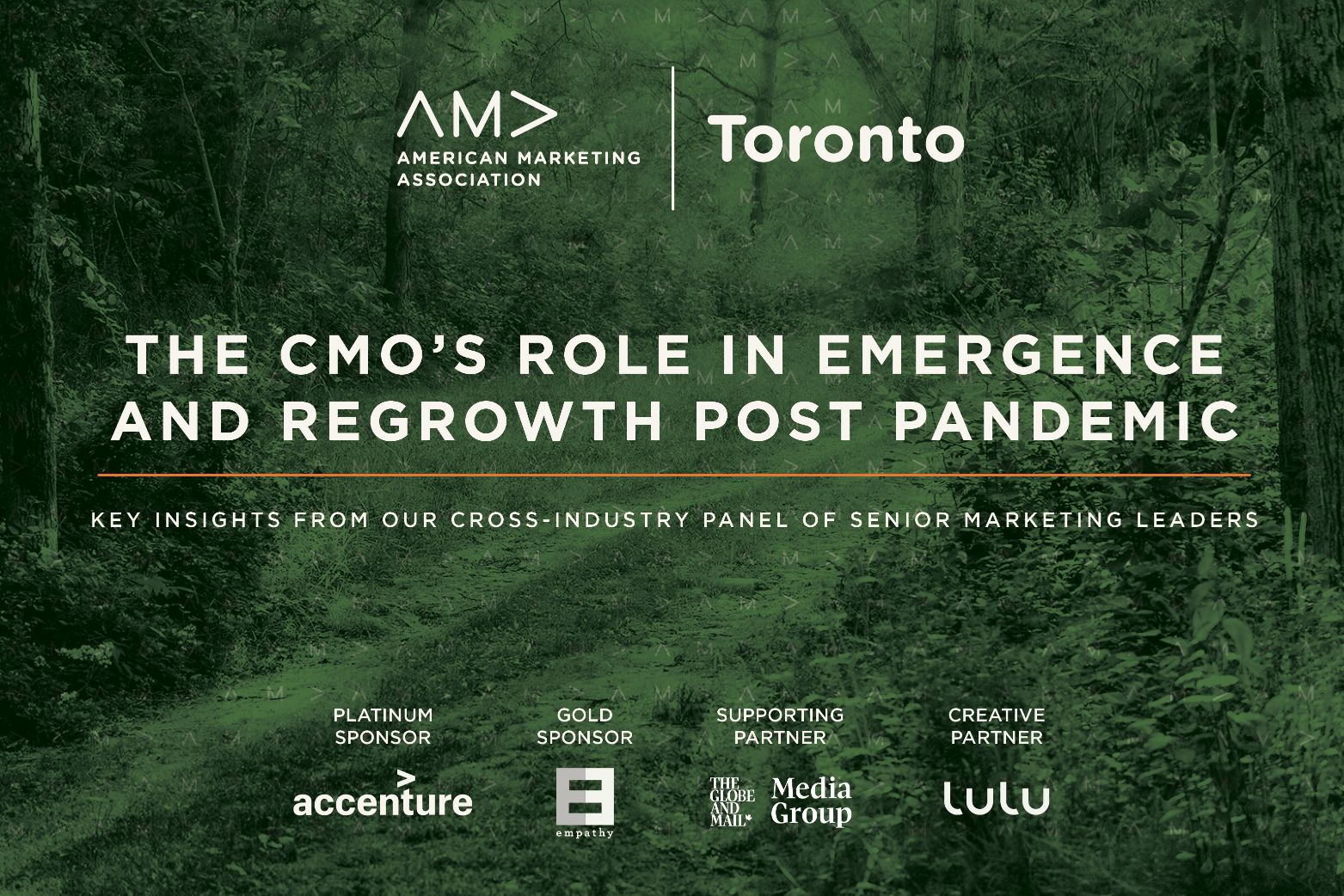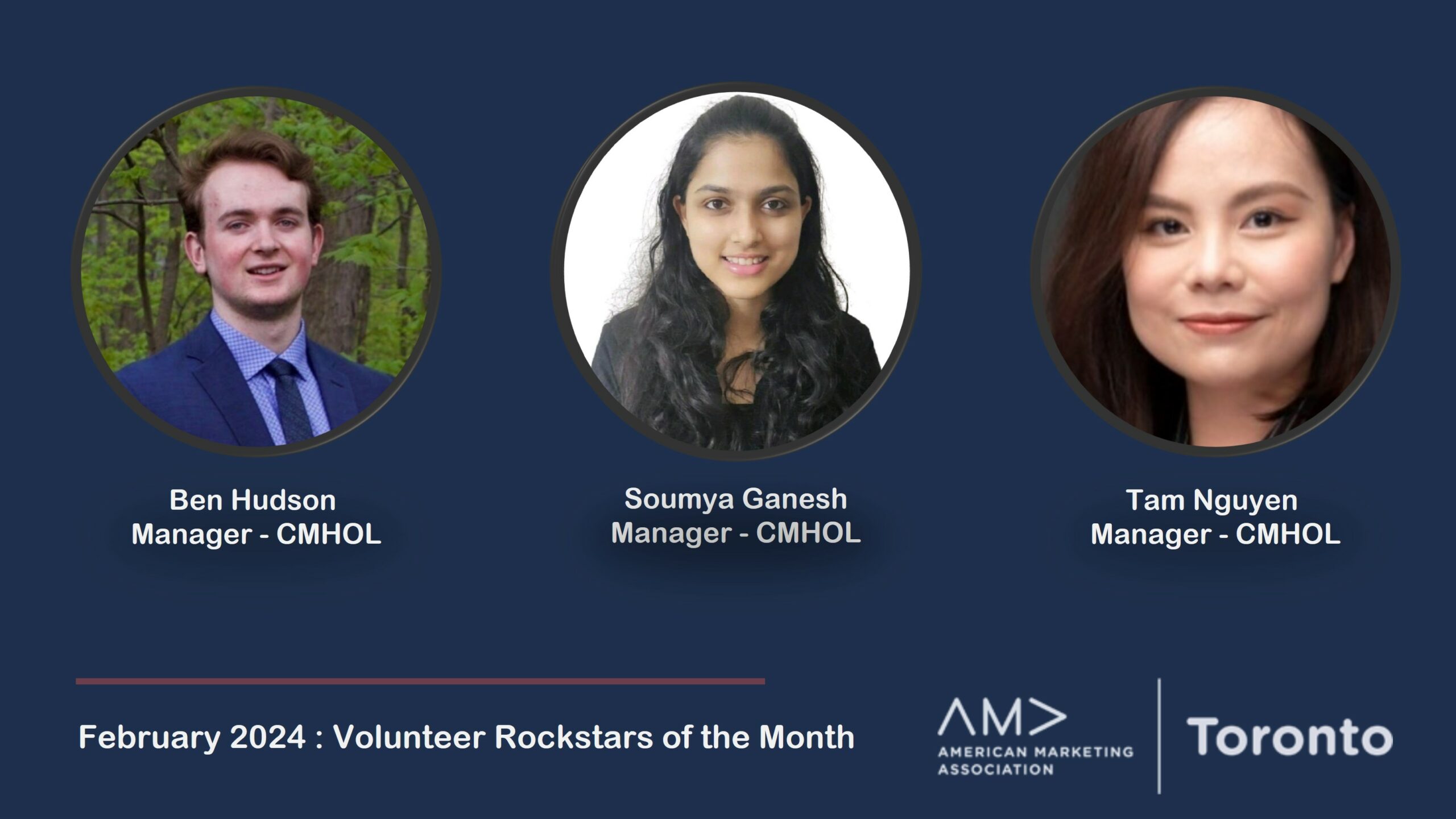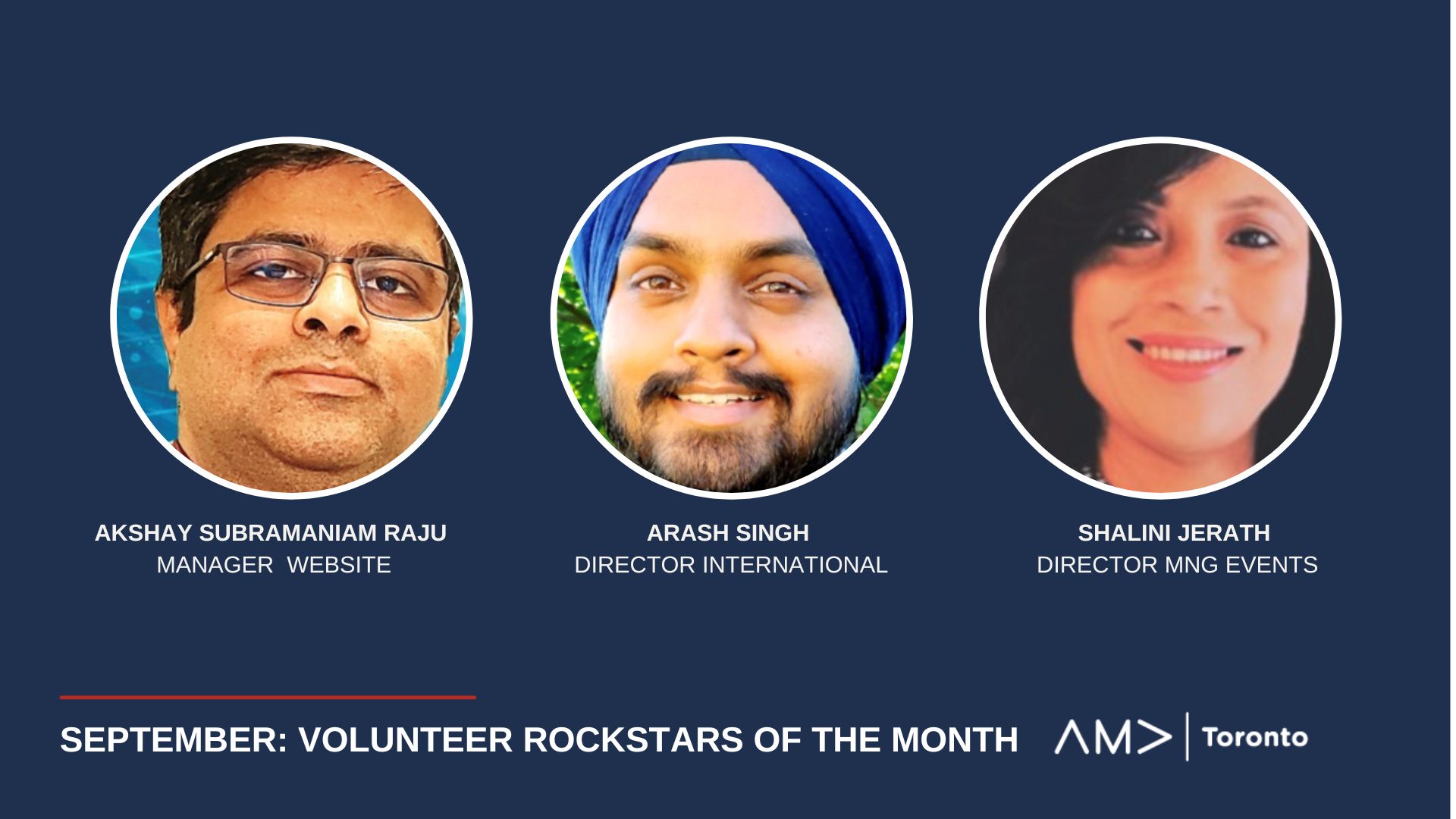As CMOs grappled with numerous challenges during the pandemic, from shuttered hotels and retail outlets to product shortages and supply chain disruptions, they must now face a new test. New challenges emerge for CMOs as the economy reopens and they steer their brands through a hopeful period of recovery and post-pandemic growth.
AMA Toronto’s CMO panel discussion of 2021 brought together five esteemed CMOs from leading global brands who opened up about their experiences during the global shutdown: from changing their marketing tactics, to pivoting, to just hoping for better times!
The question we asked, as we try to make sense of it all: “What’s the role of CMO in emergence and regrowth post pandemic?” Each of the CMOs reflected on the lessons learned and what they’re planning to do.
Travel always comes back.
Mansi Vagt, VP, Marketing & Brands at Accor, held on to this motto while trying to stay afloat in a year that was the harshest in the hospitality industry.
With over 40 plus hotel properties in North America closed, furloughs were high and morale was at an all-time low. It was a very ‘dramatic’ period as per Mansi, who chooses her words as carefully as she picks up her spices and condiments (Mansi is a certified chef!). With government support and subsidies for the bulk of their hotels in North America, they tried to retain as many staff as possible and remain cautiously optimistic about the future.
Mansi shares her CEO’s sentiments when she says, “Travel always comes back! People have this desire and need to explore other cultures, to travel, to connect.”
To the 53% of people within the U.S. who are absolutely ready to travel again, to all the loyalty members and the guests who are vaccinated and have already picked up their next travel destination, Mansi and the brand Accor have a message for you: “Don’t worry, we are here.”
In the meantime, you can gear up for your trip with the clever marketing campaign that Accor created in partnership with Neil Patrick Harris. The campaign ‘Get real with Neil’ has funny tutorials on how to pack a suitcase or get dressed like an adult, in case you have forgotten how.
Will the brick-and-mortar stores be able to match the digital experience?
Trinh Tham, CMO at Harry Rosen, ponders over this question while being hopeful of the future numbers.
“We are hearing 25-30 % growth projections from other retailers.”
Today, Trinh is optimistic about the retail market as she gauges other regions and countries for post-pandemic indicators.
“We closed our stores for a lengthy period of time and there are pent-up demands. But these demands are also linked to the ability to go to the office and social gatherings. So, we are monitoring all the movements.”
With a 3-year strategic plan and purpose statement in place, Trinh and her team safeguarded Harry Rosen, the Canadian luxury menswear brand, throughout the pandemic, focusing on their customers’ digital experience. Because it’s not just about being online; it’s about getting it right.
Both e-commerce and stores play a role in the future of retail and Trinh understands that the future is not going to be a yellow brick road journey for her. So what’s her biggest challenge? Living up to customers’ expectations about their in store experience once the stores reopen.
Trinh beams with infectious energy and seems cautiously optimistic about the future. She should be! After all, Harry Rosen rebuilt its digital experience, expanded its casual wear, and recently launched a new line of premium grooming products.
Sure, the world was going through a crisis, but a shortage of toilet paper was not the reason!
Susan Irving had definitely not expected to have a challenge like this thrown at her within 8 weeks of joining as the CMO of Kruger Products, the no. 1 tissue products manufacturer in Canada.
She shakes her head with a smile, probably answering the question for a millionth time.
“We had no shortage, ever; we were busy just keeping up with people hoarding toilet paper.”
There, you have the answer, in case you were wondering about last year’s toilet paper crisis, which was fuelled by panic-buying and hoarding by consumers, not from a production shortage.
She reflects on how consumer-packaged goods (CPG) had always focused on the next innovation, incremental growth, and the newest product launch in order to get more consumers… until the pandemic came knocking.
“The last year was just about pumping out more products. We focused more on holding on than expanding.”
Susan has mixed feelings when it comes to her sentiments about regrowth post-pandemic. Currently, she is not very optimistic as the price of raw materials are astronomically high and inflation might be lurking around the corner.
However, Susan is very proud of the way the pandemic challenged them to reassess their brand communications, focusing on value-based decision making.
“We reframed our message and started showing our human side.”
Focusing on the community and giving back to them is a shift that brings optimism in Susan’s voice.
“In the past we focused only on the consumer. Now we treat our colleagues and customers as equally important. After all, they are the brand ambassadors who work with you.”
And with that in mind, her sentiments are absolutely definitive.
Optimism is a choice, and as leaders, we have no choice but to be optimistic.
For Candy Lee, CMO at HelloFresh, it’s been a wild ride to be a part of a fast-growing tech company.
“By weirdest coincidence, you couldn’t have designed a company which was better suited for a pandemic. People needed to be fed with contactless deliveries. We put these two together to create HelloFresh.”
Candy couldn’t have been more candid as she accepted the boost that her brand got out of the lockdown. HelloFresh has shifted the focus of Canadian families to health and well-being, fresh food and nourishment.
And rightly so because who has not tried HelloFresh and felt like anything but a MasterChef?
But Candy is also cognizant of the fact that with pandemic restrictions on the way out in the next 6 to 12 months, they will have to shift gears.
““Retention is a big question for our organization right now. Earlier we were focused on out-sprinting the competition, now we have to out-smart the competition, once the pandemic eases.”
With a work culture that thrives on accountability, building insights and actioning data points, Candy and her team are ready for more challenges.
After all, Candy has earned her indomitable grit with outdoor rock climbing, an activity that she refers to as “pure fun”!
Not everything is about revenue generation, building trust is legit work too.
When Laura Curtis Ferrera, SVP and Chief Global Marketing Officer at Scotiabank, says the above-mentioned line, she means every bit of it.
An accidental banker by trade, Laura was born on a military base in Florida, studied Fine Arts and hoped to be an art gallery owner someday.
But life happened!
Today, she believes that her job at Scotiabank is to ease customers’ tensions.
“On a day-to-day basis I am not thinking about economic optimism, I am thinking about personal economy because my customer could be at either end of the spectrum – financially vulnerable with a huge credit card bill or with a credit surplus that they don’t know what to do with.”
Her team’s focus is on good advice to help each individual, tailored to the customer’s channel preference, regardless of where they stand with their own personal economy.
Laura exudes passion when she talks about the power of brands to do good. Ask her how the pandemic has changed her way of working and she is loud and clear.
“We are much louder, much more of a vanguard brand in terms of our position. Earlier we would say, “we celebrate pride month.” Now we have a point of view; we talk about it.”
She takes pride in the brand equity Scotiabank has built for itself and works relentlessly to create a space beyond just being celebratory.
And if you are wondering about the outcome, Laura adds, “Not everyone is going to love our POV. Sure, we might not have the most popular opinion and we are ok with that. We focus on being a force for good, as we are a force for growth.”
Laura literally lives and breathes representation, inclusion by design and diversity.
As the AMA’s CMO panel took us on their 2020- 21 journey, from adapting to new landscapes to finding their real brand purpose, we realize that the role of the CMO continues to evolve with new challenges and complexities. But one sentiment that cuts across industries and various job profiles is optimism and where there is optimism, nothing can hold us back for long, not even a pandemic!
To watch the full session, you can click on the link here: http://eepurl.com/hku6rv
Our special thanks again to Platinum Sponsor- Accenture, Gold Sponsor- Empathy Inc. , Supporting Partner- Globe Media Group,Creative Partner- LuLu Marketing and Chapter Partner- Score Promotions for their generosity and support.
Shreya Parashar runs Culture Opus, a Toronto based content agency and is the Content Director at AMA Toronto.




